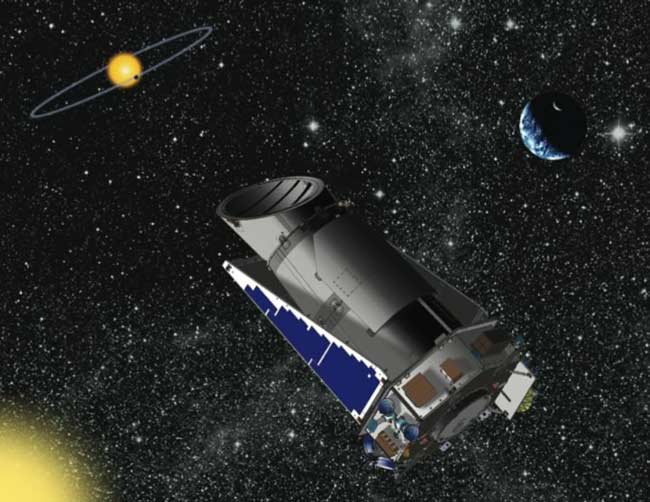NASA's Planet-Hunting Telescope Back Online After 6-Day Glitch

NASA's Kepler space observatory is back up and running after a computer malfunction stalled its search for alien planets for six full days.
Kepler resumed its meticulous hunt for extrasolar planets around distant stars on Sunday, March 20, after spending 144 hours stuck in a protective "safe mode" while engineers on Earth studied the computer glitch, mission managers said Monday. [Kepler Telescope By-The-Numbers]
"An anomaly response team will continue to evaluate the spacecraft data to determine the cause of the safe mode event," Kepler mission managers explained in a written update.
The glitch occurred on March 14, when Kepler's onboard systems ordered the spacecraft's network interface card to begin a computer program update. The card is a key component in Kepler's subsystem interface box and provides a link between the space observatory's flight software, attitude control and other sensors and control subsystems, mission managers said.
While Kepler's computer program was updating, the network interface card sent faulty data to the spacecraft's flight software, sending the observatory into safe mode.
Safe mode is a hibernation-like state that spacecraft enter when their onboard computer detects an operational state or malfunction that it is not able to solve on its own. During the event, Kepler shut down all non-essential systems – like its main science instrument – and orientated itself to point its solar arrays at the sun.
"This safe mode orientation provides the vehicle with the maximum power and limits the buildup of momentum from solar wind," Kepler mission managers said.
Breaking space news, the latest updates on rocket launches, skywatching events and more!
NASA launched the $600 million Kepler observatory in 2009 to seek out alien planets that circle other stars. [The Strangest Alien Planets]
To do that, the spacecraft is staring continuously at a single patch of the sky, watching for tiny changes in the amount of light coming from every star it sees – a sign of a potential planet crossing (or transiting) in front of its parent star, as seen by Kepler. Astronomers use other telescopes to follow up Kepler's findings in order to confirm whether or not the candidate stars do, in fact, host exoplanets.
To date, Kepler has discovered 1,235 possible planets, with 54 of those candidates located within the so-called "Goldilocks zone" a just-right habitable zone around a star in which liquid water could exist on a planet's surface.
Based on the amazing wealth of planet candidates from Kepler, astronomers have estimated that our Milky Way galaxy could hold as many as 50 billion alien planets, with 2 billion of those being about the size of Earth.
You can follow SPACE.com Managing Editor Tariq Malik on Twitter @tariqjmalik. Follow SPACE.com for the latest in space science and exploration news on Twitter @Spacedotcom and on Facebook.

Tariq is the award-winning Editor-in-Chief of Space.com and joined the team in 2001. He covers human spaceflight, as well as skywatching and entertainment. He became Space.com's Editor-in-Chief in 2019. Before joining Space.com, Tariq was a staff reporter for The Los Angeles Times covering education and city beats in La Habra, Fullerton and Huntington Beach. He's a recipient of the 2022 Harry Kolcum Award for excellence in space reporting and the 2025 Space Pioneer Award from the National Space Society. He is an Eagle Scout and Space Camp alum with journalism degrees from the USC and NYU. You can find Tariq at Space.com and as the co-host to the This Week In Space podcast on the TWiT network. To see his latest project, you can follow Tariq on Twitter @tariqjmalik.
